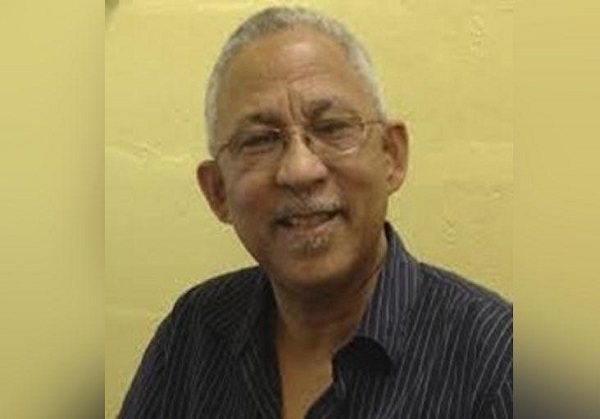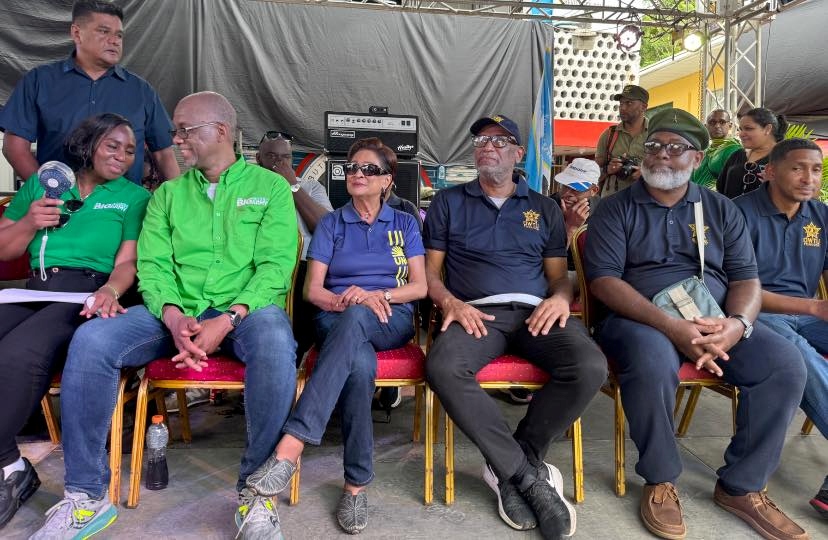In August 1962, the first Common Entrance group entered secondary schools and heard Prime Minister Dr Eric Williams say: “… you carry the future of Trinidad and Tobago in your school bag.”
At QRC, there was a boy from Rio Claro, another from Princes Town (now president of the Old Boys’ Association) and one from Tobago whose mother sold sweets at the tennis courts where NAPA now is.

The crew from Tunapuna and the Tranquillity cohort along with the Laventille contribution were present. The ‘rich’ boys from Maraval sat next to the poor. There were four persons who were first-generation Trinidadians with parents from Nevis and Montserrat and Guyana.
In form 1A, all the boys were entitled to the princely sum of $24 as a book allowance, meaning that they were the cream of the crop. Thirty-two boys from just over 200 such nationally.
They were the hopeful manifestation of the then Five-Year Plan that said ‘education is one of the most important instruments of social change … one of the fundamental goals … should be the integration of the diverse racial and cultural elements in the community … equalization of opportunity and privilege … a more even distribution of a country’s wealth’.
Where did we go astray so that we now mourn our children and their education? Why is there the racial sniping that adds little light? What impact does this failure have on our crime situation?
By 1970, the disappointment of the black youth, who had bought into the 1962 education dream and could not find jobs, spilled over. These young people were not bandits but represented the best of the then educational system.
The factories (Elite Shirt Factory, Correia’s Winery, Citrus Growers and Coconut Growers) to the west of Success Village were dying slow deaths. The artisans, whose businesses lined the Eastern Main Road and the ‘Back Road’, disappeared as the import-substitution manufacturing estates east of Champs Fleurs (Lever Brothers and Nestle were only the largest ones) grew.

The fathers, with their low-level skills, could neither ride their bikes to work nor find jobs. A double whammy: no jobs for the young, retrenchment for their fathers.
A neighbourhood, that is poor and jobless, leads to a state of apathy where one cannot rouse themselves to try again (Jahoda et al, 1972). Recession and joblessness leave a deep scar in the psyche of the affected and their children (Krugman, 1997). Crime, family breakups and a lack of social control are correlated with joblessness (Wilson, 1998).
Urban poverty is different from rural poverty (compare Sangre Grande or Moruga with Laventille). In Laventille, without a job, your chances of eating a meal are greatly reduced while at the same time you see others who have more than they can use. Relative poverty eats your soul more than absolute poverty.
The phenomenon of ‘barrel children’—whose mothers sought employment in the USA—and unemployed teen mothers, representing 15% of all live births (for older men) demonstrate coping strategies in this period. The persistent teen pregnancy problem started in the late 60s/ early 70s (Roopnarine et al, 1997).
By 1976, money being ‘no problem’, Dr Williams leveraged the newly found gas reserves to create ‘a model for the developing world … to take a lead in industrialization’ with his much-delayed embrace of the Point Lisas Industrial Estate.
He did not choose to pump the largesse into fixing directly the problems of Laventille, even though the 1970 uprising scared him. He saw the game-changer of using gas for the national good.

He had good technical advice from Ken Julien as the executor along with Basharat Ali and Carlos Hee Houng, and with William Demas, Frank Rampersad, Eugenio Moore and Doddridge Alleyne as the brains. Eldon Warner and Ben Primus, the men in charge of industrial development, moved Dr Williams to support the Estate idea. As a country, we owe a debt to these non-partisan visionary men.
Caroni Ltd, being unprofitable, needed to mechanise and the Estate became a place to absorb their surplus low-skilled labour in exchange for marginal land. The skills initially came from the nearby FedChem and Texaco.
To satisfy the ever-increasing skill needs, Julien conceptualised the National Skills Centre, now morphed into UTT. The families there escaped the jobless plight of the Laventillian families with the $8.9 billion investment on their doorsteps that brought 10,000 direct jobs. Is it fair to ask why Laventillian families cannot be like others?
Structural adjustment brought financial liberalisation, designed to grow the economy. Instead, capital flight (35% of GDP) outpaced the rate of growth (15%) mainly through trade mis-invoicing by the end of the 1990s (Salandy and Henry, 2017). The poor paid with deteriorating schools and health care. The seeds were sown for the dramatic and sudden increase in murders in the 2000-08 period. Crime has a time lag (the children have to grow up).
The educational system favours those whose home environment, worldview and lifestyle correspond with it (Bourdieu, 1990). This leads to the idea that the system is not to blame, the denial that it hinders social mobility and the shaming of the individual and the underclass for ‘underperformance’ (Bourdieu and Passmore, 1977).

Social and ethnic inequalities are rationalised and legitimised through the rhetoric of a meritocratic school system, which claims individual performance is the major determinant for educational success. We casually lower our expectations for the deprived students. In this way structural inequalities become invisible.
How can we reconcile saying that the individual student’s success is determined by his home and parents, and that ‘the Sat Maharaj school formula’ is the secret sauce for educational success?
The World Bank (1996) spells out that the issue is a case of economic inequality (pp30—41): “Not only did T&T’s 9-year-old students perform poorly by international comparison, there was also large between-school differences … The intraclass correlation [or] rho, was 0.32, indicating that 32 percent of the variation in achievement is between the schools, and 68 percent is between students within schools. Often 0.3 is taken as the cut-off point for identifying serious equity problems.
“The 14-year-olds performed slightly better. However, the rho was 0.58, indicating that 58 percent of the variation in achievement is between the schools, a very serious equity problem indeed. By contrast, the rho in Finland was 0.02, indicating it does not matter which school a student attends, he/she would have learned as much.”
The longer you stay in school, the worse it becomes.
We should focus on changing these structural inequities that hobble our potential.

Noble Philip, a retired business executive, is trying to interpret Jesus’ relationships with the poor and rich among us. A Seeker, not a Saint.
 Wired868 Wired868 for smart sport news and opinion
Wired868 Wired868 for smart sport news and opinion






